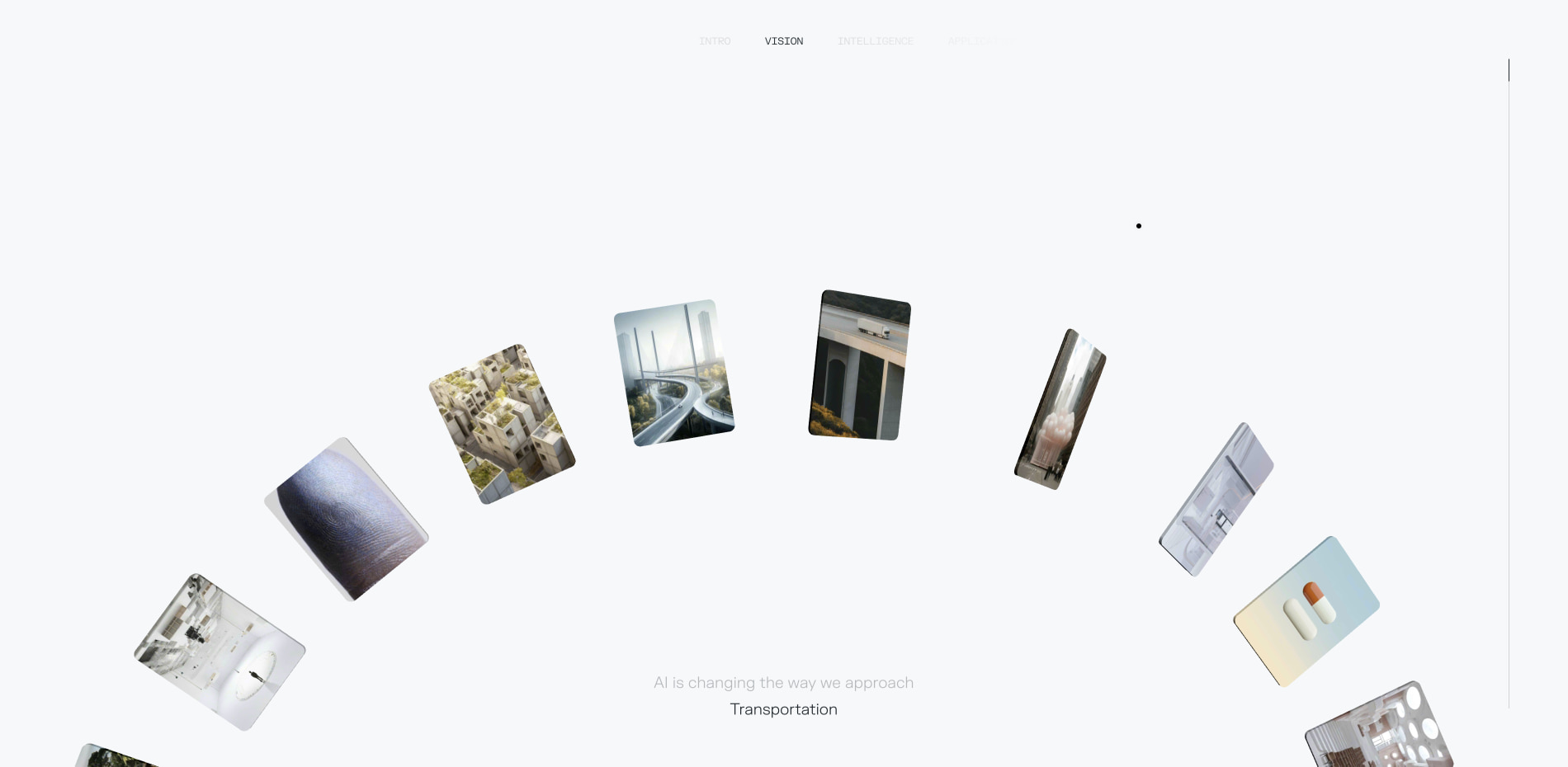
Introduction
Up until May 2025, Inkwell had no online footprint. Just silent, strategic work for clients in architecture, fashion, and beyond. Their AI-driven intelligence layer powers creativity and optimizes workflows but none of that had ever been shared publicly until May 5th, 2025. On that date, Inkwell launched the first expression of their brand—a web experience meant to reveal enough about the company's unique value proposition to engage visitors, while operating in stealth-mode.
Challenge
We were tasked with introducing a conceptually complex B2B platform, while operating under strict confidentiality constraints. This meant showcasing Inkwell’s innovation and capabilities without revealing client names, case studies, or proprietary implementations.
Compounding the challenge, the site needed to resonate with a wide range of stakeholders: C-suite executives looking for strategic impact, systems engineers seeking technical credibility, creatives drawn to potential for innovation, and strategists evaluating business alignment.
Our brief called for sharp, persuasive storytelling that could distill complex, AI-driven capabilities into a clear and compelling narrative—articulating Inkwell’s unique value proposition without relying on traditional proof points like client success stories or visual demos.
“Proof by persuasion, not portfolio… Our task was to demonstrate impact—without a single name drop!”
Approach
1. A cinematic framework
To tell Inkwell’s story in the most effective way, we approached this as any narrative: We wrote a synopsis, structured a three-act arc, and built a storyboard before anything else. Each scroll section became a scene. The transitions, the motion, even the pacing were designed like a movie.
2. A single, uninterrupted journey
The site is scroll-based by design, with no traditional navigation or chapter skipping. At the top, a static pathfinder offers orientation—it shows you where you are in the narrative—but it doesn’t let you jump forward or back. This wasn’t a stylistic choice; it was structural. Inkwell’s story is layered, and each section builds on the last. Letting users skip around would undercut that. The only click comes at the very end: a quiet, confident invitation to connect. Everything else flows in a single, uninterrupted arc. This approach mirrors how Inkwell works—deliberate, focused, and built on progression.
Process
Discovery and Strategy
We asked foundational questions: Who needs to understand Inkwell? What emotion should linger after the site visit? What does clarity look like for something this abstract? These guided every decision that followed.
Concepting
Instead of following a conventional UX/UI flowchart approach, we treated the concepting phase like pre-production for a film. We broke the experience into content blocks and motion concepts, then mapped them as a storyboard. Scroll triggers, gesture logic, and transitions were plotted visually, focusing on pacing and narrative rhythm rather than wireframe grids or page hierarchies. This cinematic framing shaped every decision that followed.
Design and Development
The visual language is clean, modern, and quietly confident. We leaned into a restrained graphic system that gives space to the content, with deliberate contrast between technical sophistication and human presence. A key element of the branding approach is the use of gradients (soft, atmospheric tones that nod to Inkwell’s Los Angeles homebase). They evoke light, sky, and transitions, grounding the digital in something tactile and real.
Graphically, the site uses geometric structures to anchor key moments. The rotating wheel in the hero section acts as a central motif, signaling complexity and systems thinking. Further down, the isometric compositions break from the typical full-bleed format, creating diagonals and visual tension that disrupt the scroll in purposeful ways. Subtle hover effects bring interactivity without spectacle, just enough to signal intelligence without overstating it.
From a technical standpoint, we built the experience using Vue.js and integrated WebGL using OGL and Vue’s Custom Renderer API. This gave us a unified framework where DOM and 3D elements could speak to each other cleanly. Physics and motion were handled with RapierJS to support the scroll-driven dynamics with consistent performance.
To keep things fast and smooth, 90 image assets were compressed using KTX2, reducing load without quality loss. This was essential to deliver a smooth scroll experience.
QA and Refinement
We tested across profiles—executives, developers, designers—to ensure clarity across roles. Mobile experience was tuned for balance and pacing.
Result
Inkwell.tech feels intentional from the first interaction to the last. It doesn’t try to do too much. It communicates the company’s mission, character, and capacity while keeping specifics off the table. The site is immersive, confident, and understated. It introduces Inkwell as a leader, with just enough said to spark intrigue.
“We had to make the invisible, irresistible.”
What We Learned
Working with a client that offers real trust isn’t just empowering, it’s a responsibility. Inkwell gave us full creative freedom, with no preset wireframes, no locked-in requirements, and no fallback templates. That kind of open brief is rare. It’s thrilling, but it also puts the full weight of the outcome on the creative team. There’s no safety net. Every decision matters.
With that trust came clarity. We weren’t designing for approvals, we were designing to translate a vision, one that hadn’t been articulated before. That kind of opportunity not only shapes the output, it shapes the entire process. It forced us to be more intentional, more rigorous, and more precise. When you’re trusted to define the narrative, build the structure, and shape the tone from the ground up, the stakes are high—but so is the potential for meaningful, lasting work.
Technologies
Frontend Frameworks and Libraries:
Vue.js, Vue Custom Renderer, OGL, GSAP
Backend Technologies:
Static frontend
Server Architecture:
Jamstack with asset optimization
Tools:
RapierJS, KTX2 compression, WebGL modules
Company Info
SavoirFaire is a New York-based creative studio that blends technology, strategy, and design to create digital experiences that resonate. We work with ambitious brands to translate complexity into clarity, always with a sharp point of view.
